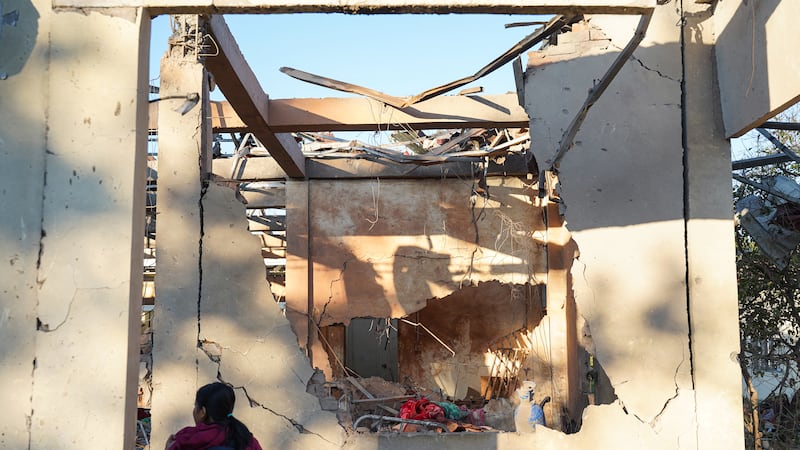Forecasters in the Philippines say Typhoon Mangkhut has made landfall in the country's northeastern coast.
Witnesses say the storm’s wind and rain ripped off tin roof sheets and outed power at the start of the onslaught.
Forecasters said the typhoon made landfall in the coastal town of Baggao in Cagayan province nearly two hours after midnight local time in the northern tip of the main Luzon island.

It is an agricultural region of flood-prone rice plains and mountain provinces often hit by landslides.
More than 5 million people are at risk from the storm, which the Hawaii-based Joint Typhoon Warning Centre categorises as a super typhoon with powerful winds and gusts equivalent to a Category 5 Atlantic hurricane.
Philippine authorities evacuated more areas on Friday and warned the estimated 5.2 million people in the path of the “very destructive” typhoon to stay indoors, as the country braced itself for heavy rain and damage to infrastructure and crops.
More than 15,000 people had been evacuated in northern provinces by Friday afternoon, the Office of Civil Defence said.
The super typhoon has maintained 205km/h wind speeds and gusts of up to 255km/h since it struck Micronesia earlier in the week.
The storm has a huge raincloud band 900km wide, and may combine with seasonal monsoon rains.
More than 9,000 people have been moved to temporary shelters as Mangkhut, locally known as Ompong, made its way towards the rice- and corn-producing provinces of Cagayan and Isabela, coming at the start of harvesting season.
Rescue teams
Disaster officials warned that tens of thousands more may need to be moved and weather forecasters warned of storm surges as high as 6m in coastal villages in the typhoon’s path. Second and third contingents of rescue teams were being prepared, in case first-responders get into trouble themselves.
"My appeal is that we need to heed the advice of the authorities. Stay indoors," said presidential adviser Francis Tolentino, the government's disaster response co-ordinator.
Video posted on social media by Cagayan residents showed trees being whipped by fierce winds under dark grey skies as rain lashed down on buildings.
Cagayan governor Manuel Mamba said he expects widespread damage to crops and infrastructure in his province, and said help would be needed to rebuild.
“Last time we had a super typhoon, there were 14,000-plus of totally destroyed houses and about 40,000-plus of partially destroyed houses,” he told news channel ANC.
“We expect this kind of damage with a super typhoon like this and so we would ask the assistance of the national government and even the private sector.”
Warning signals
The capital, Manila, and more than three dozen northern and central provinces have been placed under storm warning signals. Classes have been suspended and government offices shut early in more than 600 places, while military, medical and emergency response teams were put on standby.
The coast guard said about 5,000 passengers were stranded at several ports by the impending storm, which will head on towards Hong Kong, China and Vietnam.
Mangkhut's peak winds are stronger than those of Hurricane Florence, which is expected to drop eight months of rain on the Carolinas in the United States within a few days.
"The concerns here are landslides and infrastructure being washed away," said Junie Cua, governor of Quirino province on the main island of Luzon.
Authorities are taking extra precautions as they draw comparisons with Typhoon Haiyan, which devastated central areas of the archipelago in 2013, and killed 6,300 people, many in storm surges that reached as high as 8m.
But weather forecasters said Mangkhut’s wind speed was unlikely to accelerate further from the current 205km/h and reach Haiyan’s 240km/h. Northern Luzon is also a less densely populated area.
Mangkhut might slightly weaken after landfall but could still be "very destructive", said Rene Paciente, assistant chief at the weather bureau.
“It can lift cars, you can’t stand, you can’t even crawl against that wind,” Paciente told reporters late on Friday in Manila.
Crop damage in a worst-case scenario could reach about 157,000 tonnes of paddy rice and about 257,000 tonnes of corn, worth 13.5 billion pesos (€214 million), the agriculture ministry said.
That could result in tightness in the domestic rice supplies at a time when retail prices are already high, compounding worries about inflation. – Reuters/AP














